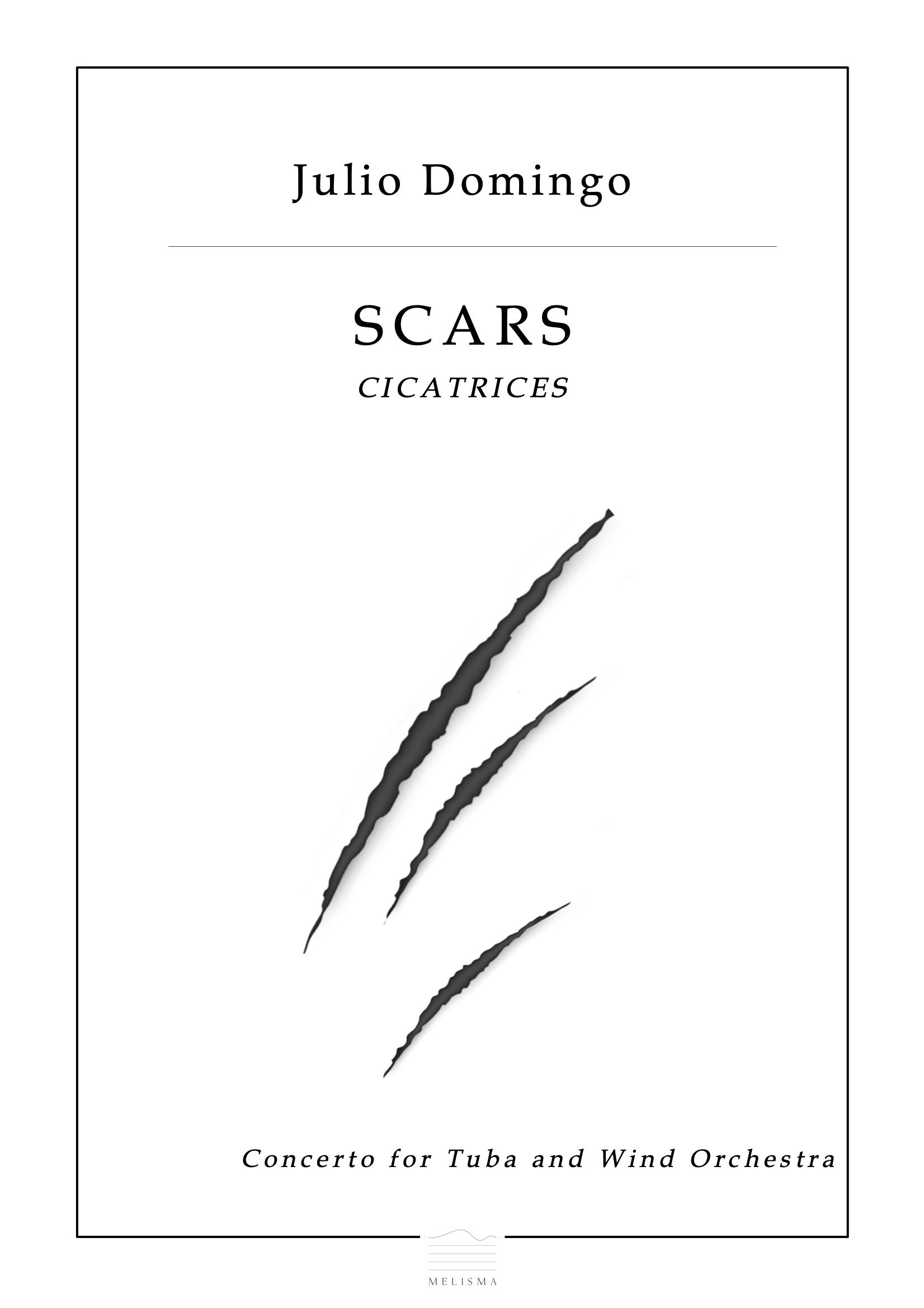Leviathan
Concerto Tuba and Wind Orchestra
2022
Setting: Solo Tuba and Wind Band
Difficulty: Tuba 6, Wind Band 4.
Duration: ca. 22’20” (1. 7’30”, 2. 7’20”, 3. 7’30”)
Scars is a Concerto for Tuba and Wind Orchestra, split in three movements:
-
Scars that hurt
-
Scars that bleed
-
Scars that heal
The work opens with a call for rage and pain and ends with a call for joy and life. This trip from darkness to light shapes Scars: a journey of healing, a journey of endurance.
The first movement follows a sonata form, exposing the two main themes. The first one (b. 20 – 95), aside the raging call, is melodically and harmonically based on the interval of third. As a contrast, it is the interval of fourth the one that forms the second melody (b. 96 – 146). These two intervals will be present throughout the whole work, providing unity and coherence. The developing (b. 159 – 222) plays on the first theme, giving sometimes the feeling that “everything will be alright”, but it is finally anger who wins and closes the movement.
Scars that bleed starts with an angry cadenza. Bit by bit, anger slows down, leading to a calmly, dream-like reflection upon the second theme. Afterwards, the English Horn takes a supporting role, accompanying the tuba into the process of “healing”. Music builds then up in a bittersweet atmosphere, and closes with relief in a last cadenza, where tuba goes back to where it started, now feeling in peace.
This feeling connects directly to the closing movement, where precedent themes are reprised and combined, and where resilience finally takes place (b. 184). The score closes in an arch structure, with one last statement, now joyful, of the opening call.
Scars (Cicatrices) es un Concierto para Tuba y Banda Sinfónica, dividido en tres movimientos:
-
Cicatrices que duelen
-
Cicatrices que sangran
-
Cicatrices que sanan
La obra abre con una llamada de rabia y dolor y termina con un canto a la alegría y la vida. Este recorrido de la oscuridad a la luz da forma a Scars: un viaje de recuperación, un viaje de resistencia.
El primer movimiento sigue una forma de sonata, exponiendo los dos temas principales. El primero (c. 20 – 95), además de la llamada furiosa, se basa melódica y armónicamente en el intervalo de tercera. En cambio, es el intervalo de cuarta el que forma la segunda melodía (c. 96 – 146). Estos dos intervalos estarán presentes a lo largo de toda la obra, aportando unidad y coherencia. El desarrollo (c. 159 – 222) juega con el primer tema, dando a veces la sensación de que “todo irá bien”, pero finalmente es el enfado quien vence y cierra el movimiento.
Scars that bleed (Cicatrices que sangran) comienza con una furiosa cadencia. Poco a poco, la ira se ralentiza, dando lugar a una reflexión sosegada y onírica sobre el segundo tema. Posteriormente, el corno inglés asume un papel secundario, acompañando a la tuba en el proceso de “curación”. La música crece entonces en un ambiente agridulce, y cierra con alivio en una última cadencia, donde la tuba vuelve al punto de partida, ahora sintiéndose en paz.
Este sentimiento conecta directamente con el último movimiento, donde los temas precedentes se retoman y combinan, y donde finalmente tiene lugar la ansiada resiliencia (b. 184). La partitura cierra en estructura de arco, con un último enunciado, ahora gozoso, de la llamada inicial.

